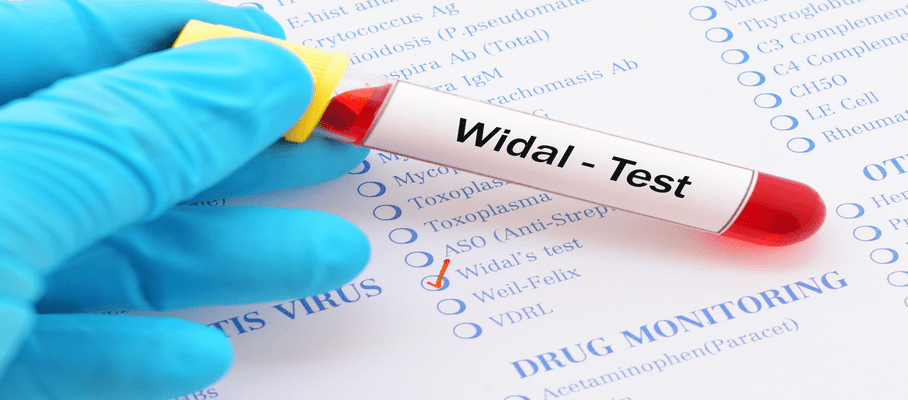Preventive Healthcare
Hemochromatosis: What You Need to Know About Iron Overload

Table of Contents
- What is hemochromatosis?
- What is iron, and why do I need it?
- Why is too much iron dangerous?
- How common is hemochromatosis?
- What are the types of hemochromatosis?
- What causes hemochromatosis?
- What are the symptoms of hemochromatosis?
- How is hemochromatosis diagnosed?
- What tests are required for hemochromatosis?
- How is hemochromatosis treated?
- How do I prevent hemochromatosis?
- What is the outlook with hemochromatosis?
- How much iron do I need in my diet?
- What are some hemochromatosis home remedies?
- Conclusion
What is hemochromatosis?
Hemochromatosis is an inherited disorder that disrupts your body's iron regulation, causing excessive iron absorption from food. This leads to a gradual buildup of iron in your organs and tissues.
What is iron, and why do I need it?
Iron is a mineral that plays a vital role in creating haemoglobin, the protein in red blood cells that carries oxygen throughout your body. It's also essential for producing certain hormones and maintaining healthy connective tissues. However, while iron is necessary, too much can be harmful.
Why is too much iron dangerous?
Iron overload can be toxic to your body, damaging tissues and organs over time. Excess iron can lead to serious complications such as:
-
Cirrhosis (liver scarring)
-
Heart problems like irregular heartbeat and heart failure
-
Joint pain and arthritis
How common is hemochromatosis?
Hemochromatosis is a relatively rare condition, affecting about 1 in 200 people of Northern European descent. It's less common in other populations.
What are the types of hemochromatosis?
There are several types of hemochromatosis:
- Hereditary hemochromatosis: The most common form, caused by mutations in the HFE gene.
- Juvenile hemochromatosis: a rare, more severe type that affects younger individuals.
- Neonatal hemochromatosis: a life-threatening condition in newborns, causing liver failure.
- Secondary hemochromatosis: Caused by other conditions like liver disease or frequent blood transfusions.
What causes hemochromatosis?
Hemochromatosis causes are primarily genetic. Hereditary hemochromatosis occurs when you inherit two mutated copies of the HFE gene, one from each parent. These mutations disrupt your body's ability to regulate iron absorption, leading to iron overload. Less commonly, hemochromatosis can be caused by other conditions that increase iron intake, like frequent blood transfusions.
What are the symptoms of hemochromatosis?
Early signs of hemochromatosis may include:
-
Fatigue and weakness
-
Weight loss
-
Joint pain, especially in the knuckles
-
Irregular periods in women
-
Erectile dysfunction in men
As iron continues to accumulate, more severe hemochromatosis symptoms can develop:
-
Darkening of the skin (bronze or grey discoloration)
-
Yellowing of the skin and eyes (jaundice)
-
Diabetes symptoms like increased thirst and urination
-
Severe joint pain and arthritis
-
Heart problems like chest pain and shortness of breath
How is hemochromatosis diagnosed?
Hemochromatosis is typically diagnosed through blood tests that measure your iron levels, including:
-
Serum transferrin saturation: The percentage of transferrin (an iron-transporting protein) that's carrying iron
-
Serum ferritin: Reflects the amount of iron stored in your body
If these tests indicate iron overload, genetic testing for HFE mutations can confirm hereditary hemochromatosis. In some cases, a liver biopsy may be done to assess organ damage.
What tests are required for hemochromatosis?
To diagnose and monitor hemochromatosis, your doctor will likely order the following tests:
-
Serum iron and transferrin saturation levels
-
Serum ferritin levels
-
HFE gene mutation testing
Additional tests like liver ultrasound, MRI, or heart function tests may be needed to check for organ damage.
How is hemochromatosis treated?
The main hemochromatosis treatment is regular blood removal, known as therapeutic phlebotomy. This helps lower your iron levels to a healthy range. The frequency of phlebotomy sessions depends on the severity of your iron overload.
Other important aspects of managing hemochromatosis include:
- Avoiding iron supplements and multivitamins containing iron
- Limiting vitamin C supplements, as vitamin C increases iron absorption
- Avoiding alcohol to prevent further liver damage
- Getting vaccinated against hepatitis A and B to protect your liver
- Having regular check-ups to monitor iron levels and organ function
In some cases, iron chelation therapy (medications that bind and remove excess iron) may be used if phlebotomy isn't suitable.
How do I prevent hemochromatosis?
There's no sure way to prevent genetic hemochromatosis, but early diagnosis and treatment can prevent complications. If you have a family history of the disorder, consider genetic screening to assess your risk. Maintaining a balanced hemochromatosis diet that avoids excess iron intake is also important.
What is the outlook with hemochromatosis?
With early diagnosis and proper treatment, most people with hemochromatosis can lead normal, healthy lives. However, untreated iron overload can lead to serious complications like liver disease, heart problems, and diabetes. Regular monitoring and adherence to your treatment plan are key to managing the condition effectively.
How much iron do I need in my diet?
While limiting iron intake is important with hemochromatosis, it's crucial not to eliminate iron entirely. Work with a registered dietitian to develop a balanced eating plan that meets your individual needs.
What are some hemochromatosis home remedies?
In addition to medical treatment, some lifestyle changes can help manage hemochromatosis symptoms.
-
Staying hydrated to support liver function
-
Engaging in moderate exercise to maintain joint health and overall well-being
-
Managing stress through relaxation techniques like deep breathing or meditation
-
Eating a nutritious, balanced hemochromatosis diet rich in fruits, vegetables, and whole grains
Remember, home remedies should complement, not replace, your prescribed hemochromatosis treatment plan.
Conclusion
Navigating life with hemochromatosis can feel overwhelming, but with the right knowledge and care, you can effectively manage iron overload and prevent complications. If you suspect you may have hemochromatosis symptoms or have a family history of the disorder, don't hesitate to talk to your doctor. Early diagnosis and intervention are crucial for maintaining your health and quality of life.
At Metropolis Healthcare, we understand the importance of accessible, reliable diagnostic services. Our expert team of phlebotomists provides convenient at-home sample collection for hemochromatosis tests, ensuring your comfort and safety. With our state-of-the-art labs and user-friendly online reports, you can trust us to support you on your health journey.
Remember, prioritising your well-being is an act of self-care. By staying informed, proactive, and committed to your hemochromatosis treatment plan, you can take control of your health and live your best life. You've got this!











































